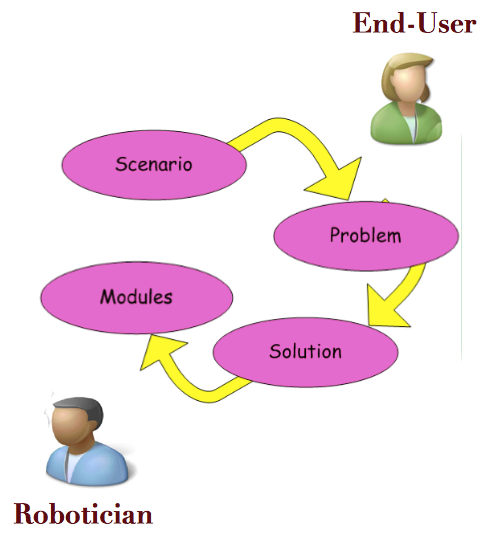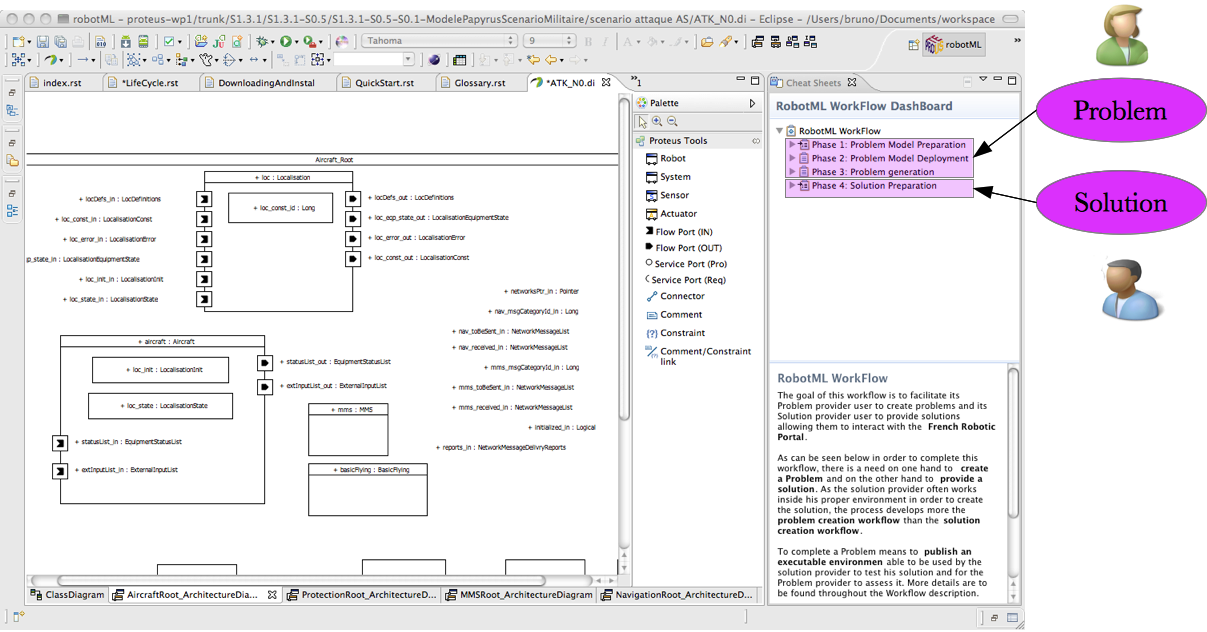Life cycle¶
Roles¶
As presented in picture ITR-I-F1 there are several roles to be considered:
- Provider: Here it means someone that is able to upload something on the portal either using the different tools developed in the PROTEUS project or directly knowing the protocols to be used. These actions ask for an authentication that will allow to limit access to the different parts of the portal.
- User: Here it means someone that is able to download something from the portal in the same conditions as the provider with as much authentication knowing that some parts will be relayed to private website askinng perhaps for other authentication steps
Objects on the portal¶
providers create and upload many different elements that can be downloaded by many users. Elements that could be exchanged are numerous:
- Model: It is an abstract view of a system as implemented using the RobotML representation
- Algorithm: an Algorithm provider can provide to the community either a description of its solution or a software module implementing this description. In the scope of the portal this module will have to respect properties.
- Problem: in the scope of the portal a problem is not only some documents lightly defining problems’ condition. It means to provide specific data allowing to understand in detail what it is and to assess possible answers against it.
- Robot: This portal is open to the community and thus also to Robots providers that will be able to promote their products on the portal. In the context of the life cycle it means also that
- Data: It can be videos, photos, whatever that is of interest to robotic, e.g. elements to test video processing functions or EM images, etc.
Life Cycle¶
Presentation¶
Rationale, Roles and objects to be manipulated are not sufficient to implement a life cycle. In fact, the portal philosophy is explicitly build around the following life cycle:
- In order to begin such a life cycle, it is necessary first to ask questions and in this scope it means for Problem to provide problems
- Then there is a need to provide answers, it means for Solutions to provide Algorithms, including architectures able to answer the question asked by the above problem.
- Last but not least, there should be away for those asking questions to assess for themselves the so-called answers.
These steps are described in the following figure
As can be seen Scenario and Problems are in the hands mostly of the end-users. An end-user is often a company not knowing how to solve a question but knowing what this question is. It is in our context up to roboticians to provide answers to these questions providing Solutions and going to the extent of creating reusable modules for the community to consider at large.
Portal and life cycle¶
As can be seen in the following picture, the RobotML portal implements as it is this life cycle taking into account management of web account (authoring, reserved space on the portal, ...).
RobotML platform and life cycle¶
As can be seen on the following picture a specific customisation of the platform help system has been created that implements the life cycle. The user will be able to follow it and she / he will be guided through the different steps implementing each of the steps of the life cycle.

